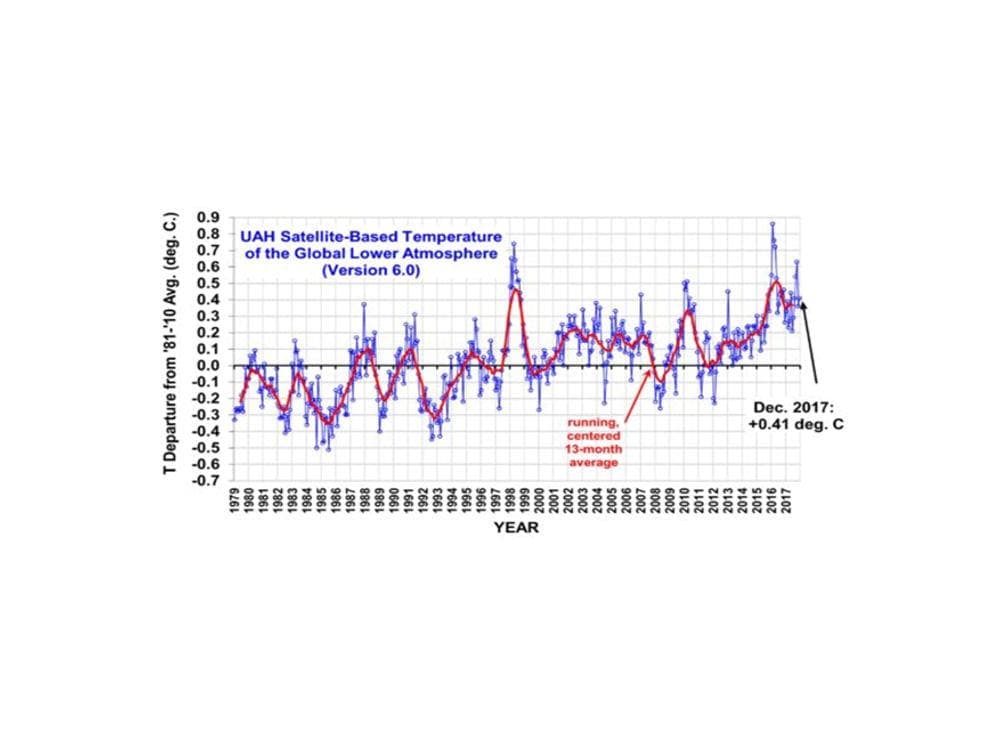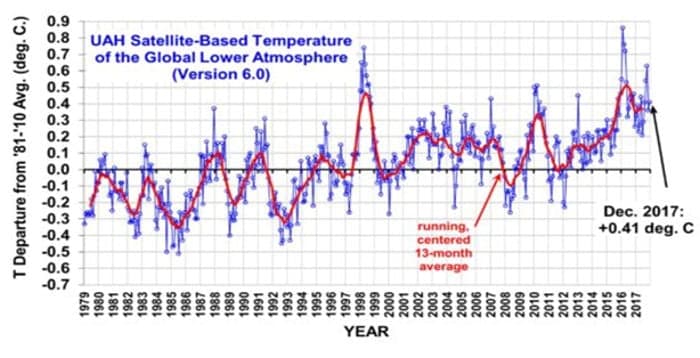The instrumental temperature record began with the Central England Temperature (CET) record in the mid-1600s. This period roughly coincides with the nadir of the Little Ice Age (LIA), which extended from approximately 1350 to approximately 1850. The broader instrumental temperature record began in the mid-1800s, roughly corresponding with the end of the LIA. Prior to the instrumental temperature records, all global temperature estimates are based on the analysis of temperature proxies, including tree rings, ice cores, sediments, etc.
The determination of what is the “normal” global average near-surface is frequently tied to the estimated temperature at the end of the LIA (~1850), which is also considered to be the end of the pre-industrial period. This global average near-surface temperature is estimated to be ~57oF (~14oC). This compares to an estimated global average near-surface temperature of ~54oF (~12oC) at the nadir of the LIA. This also compares to a current estimated global average near-surface temperature of ~58.6oF (~15oC), which is similar to the estimated global average near-surface temperature at the peak of the Medieval Warm Period.
The global average near-surface temperature has apparently fluctuated between ~54oF (~12oC) and ~59oF (~15oC) over the past 4500 years. Humanity has found this temperature range congenial, though the warmer periods have been more congenial than the cooler periods, such as the LIA. All of the temperature fluctuations in the first ~4350 years of this period are generally considered to have been the result of natural variation. However, the net positive temperature change over the most recent ~150 years, and especially over the past ~70 years, are frequently attributed, in whole or in part, to human influences, primarily the addition of greenhouse gases to the atmosphere.
It should be noted that the net positive temperature change over the recent ~150-year period has been punctuated by frequent warming and cooling events resulting from continued natural variation. These warming and cooling events have been triggered by El Nino and La Nina events, the Pacific Decadal Oscillation and Atlantic Multi-Decadal Oscillation, as well as by volcanic activity and other non-anthropogenic influences.

The most dramatic of these natural warming and cooling events was the warming and subsequent cooling associated with the 1997 /1998 El Nino, which produced a temperature spike ~80% of the magnitude of the temperature change since 1850. However, there are numerous other significant natural variations, ranging from ~30% - ~50% of the temperature change since 1850. It is not currently possible to isolate the natural components of these temperature changes from the anthropogenic components.
It should also be noted that the global average near-surface temperature is calculated from a large number of widely varying local and regional near-surface temperatures. For example, the annual average near-surface temperature in Barrow, Alaska is ~17oF, approximately 40oF below the global average; and, in Fairbanks, Alaska the average near-surface temperature is ~37oF, approximately 20oF below the global average. Also, the annual near-surface temperature in Phoenix, Arizona is ~75oF, or approximately 18oF above the global average near-surface temperature.
One issue which is rarely, if ever, raised is the issue of “ideal”, or “optimum” conditions (temperature, precipitation, etc.). Many probably assume that the long-term average global near-surface temperature of ~57oF is the “ideal” temperature, which we should make every effort to maintain. But that raises questions regarding the historical average near-surface temperatures in widely varying locations, such as those noted above. Clearly, if the global average near-surface temperature is “ideal”, then the average temperatures in Fairbanks and Phoenix are non-ideal, as are the temperatures in most of the rest of the globe.

